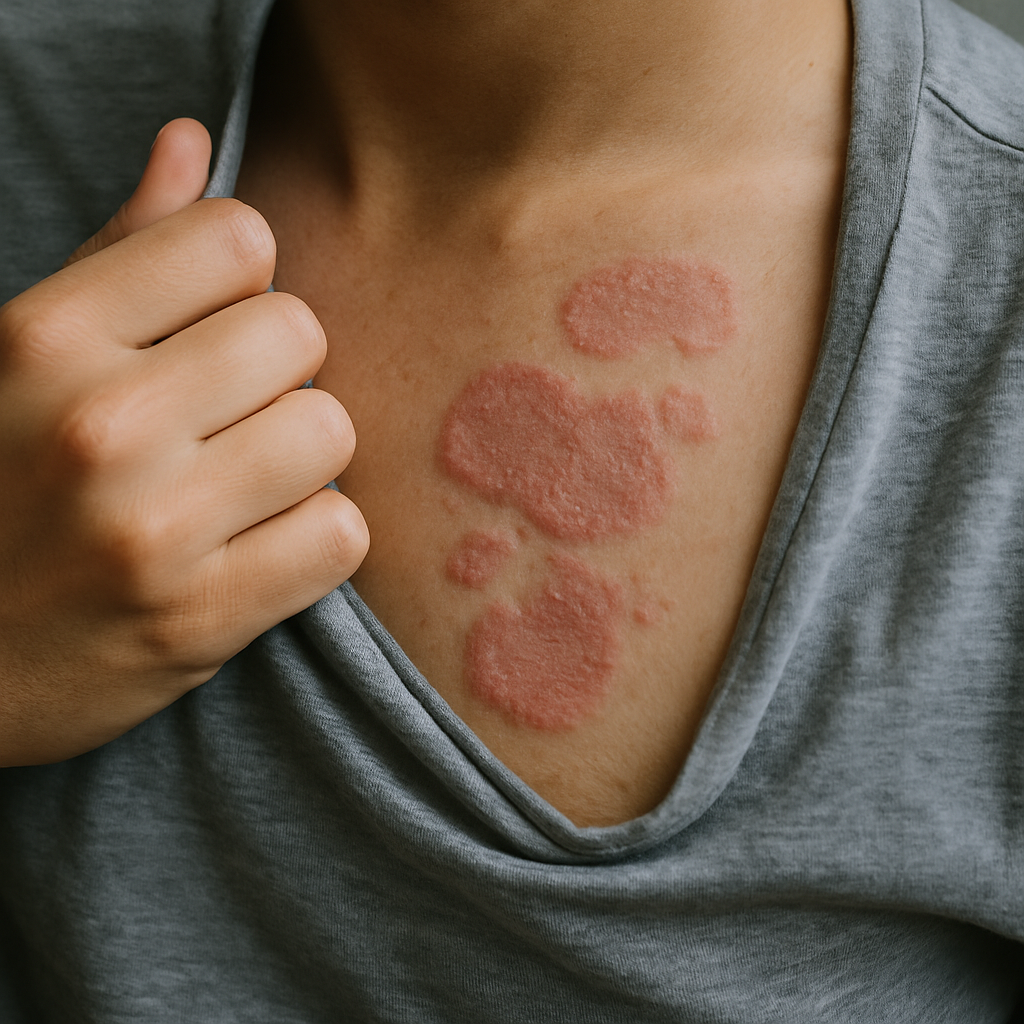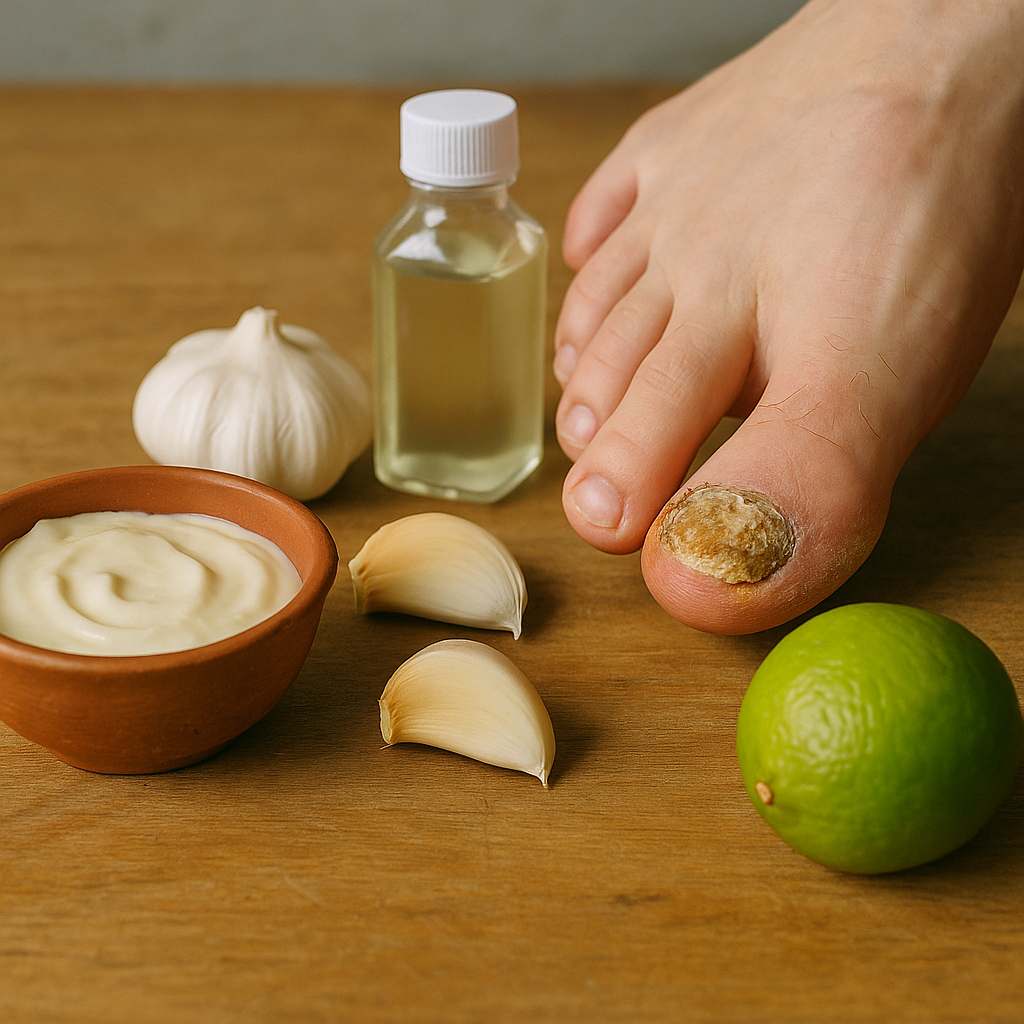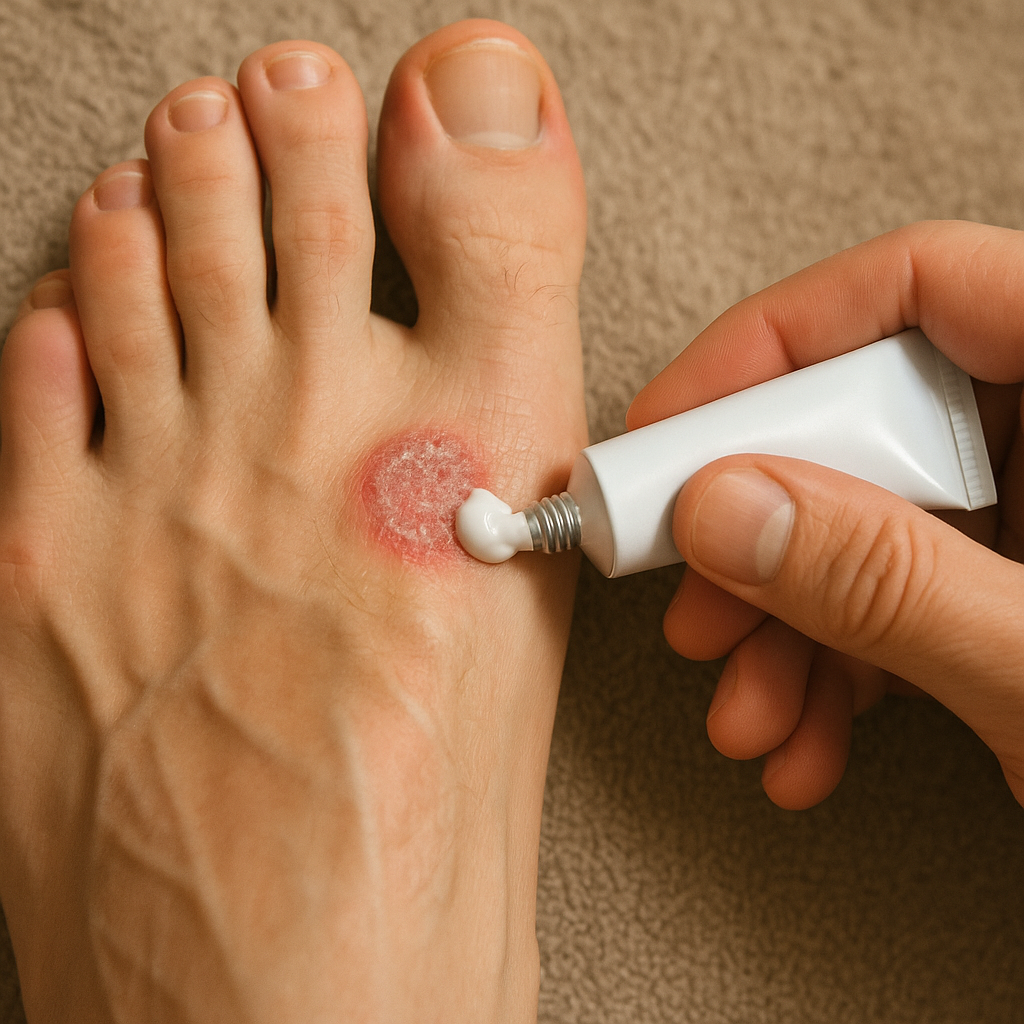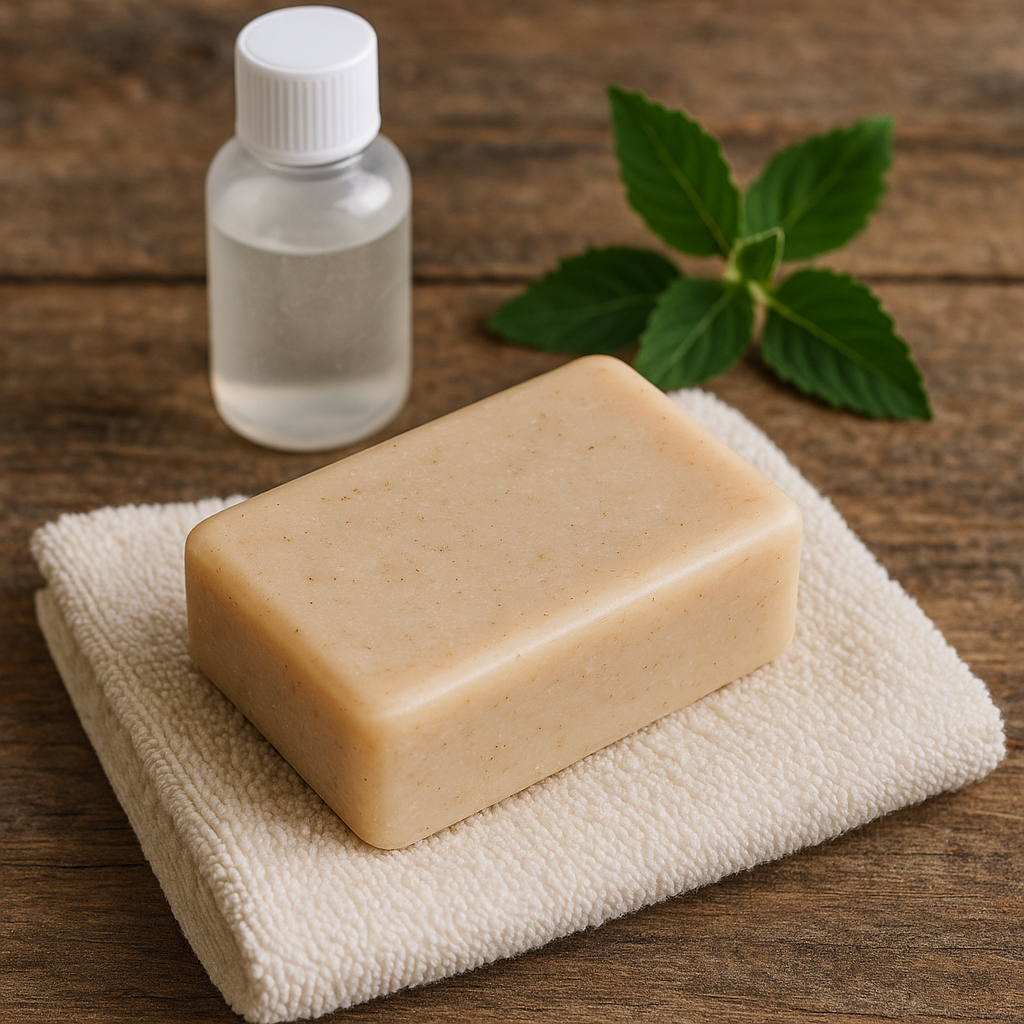Shop Now in Our Store
How to Cure Fungal Infection on Skin Naturally at Home

If you’ve ever dealt with a fungal infection on skin, you know how uncomfortable—and frankly annoying—it can be. Red, itchy, sometimes even smelly, fungal skin infections are more common than most of us realize. And the worst part? They tend to come back if not treated properly. But here’s the good news: there are ways to learn how to cure fungal infection on skin naturally at home. No need to rush to the pharmacy for a pricey cream right away. Sometimes, your kitchen cabinet and grandma’s old ayurvedic secrets might just do the trick.
In this guide, we’ll walk you through everything from understanding skin fungal infection, to effective fungal infection home remedies, the best ayurvedic approaches, and even tips on choosing the right soap for fungal infection. Let’s dive in and help you (and your skin) get back to normal—naturally.
What Is a Fungal Skin Infection
A fungal skin infection occurs when fungus (yeah, the same type that causes athlete's foot or ringworm) invades the skin, often in warm, moist areas like armpits, groin, or between the toes. It’s not dangerous most of the time, but it can spread and get worse if left unchecked.
The most common culprits? Dermatophytes and yeast. These microorganisms love to thrive in damp environments and feed off keratin—yes, that protein in your skin, nails, and hair. Lovely, right?
You might see red patches, scaling, cracking, or notice intense itching. Sometimes, the skin even becomes discolored. It’s not always pretty, but it is treatable. And better yet, you can start fungal infection treatment at home without having to wait in line at a clinic.

How to Treat Fungal Infection at Home: Ayurvedic View
Ayurveda, India’s 5,000-year-old system of natural healing, treats fungal infections as an imbalance in the body's doshas—specifically Pitta and Kapha. The goal is to restore balance through detoxification, diet, and natural remedies that tackle the root cause instead of just masking symptoms.
Daily Hygiene and Diet for Skin Health
First things first—cleanliness. Wash the infected area at least twice daily with soap for fungal infection (we’ll talk more about the best options later). Always dry the skin thoroughly—moisture is basically a party invitation for fungus.
Next up, your diet. Ayurveda suggests avoiding spicy, fried, and overly sweet foods, which aggravate Pitta. Instead, eat cooling and detoxifying foods like bitter gourd, neem, turmeric, and fresh veggies. Staying hydrated also helps flush toxins out, which supports overall skin health.
Oh, and wear breathable cotton clothes. It’s a small thing, but it makes a big difference.
Herbs and Oils That Help Fight Fungi
Now we’re talking about nature’s antifungals. A few herbs and oils have shown real promise for fungal infection treatment:
-
Neem oil: Antibacterial, antifungal, anti-everything-bad.
-
Tea tree oil: Highly effective, but dilute it—this stuff’s strong.
-
Turmeric paste: A natural anti-inflammatory and antifungal combo.
-
Aloe vera gel: Soothes irritation and speeds healing.
You can use these topically or incorporate them into home remedies for fungal infection. For example, mix a few drops of tea tree oil in coconut oil and apply it twice a day. Works like a charm (usually).

Home Remedies for Fungal Infection on Skin
Let’s get into the juicy part: home remedies for fungal infection. Because honestly, you don’t always need heavy-duty meds when grandma’s spice rack might be enough.
1. Apple Cider Vinegar (ACV) Soaks
Good ol’ ACV is acidic and creates an environment that fungi hate. Mix 1 part ACV with 3 parts warm water, soak a cotton ball, and dab it on the infected area twice a day. Yes, it stings a bit—but it works.
2. Turmeric and Honey Paste
Turmeric is basically the MVP of ayurvedic treatment for fungal infection. Mix it with honey (another antifungal gem), apply to the skin, leave for 30 minutes, rinse off. Do this once daily. Careful though—turmeric stains like crazy.
3. Coconut Oil and Garlic
Weird combo? Maybe. Effective? Very. Coconut oil is soothing and mildly antifungal, and garlic contains allicin, a compound known to kill fungi. Crush a clove, mix it into warm coconut oil, apply, and leave it overnight. Just don’t go on any dates that evening.
4. Yogurt (Yes, Really)
For yeast-based infections, plain probiotic yogurt can help restore the good bacteria on your skin and fight off the bad guys. Dab it on the skin for 20 mins, then rinse with lukewarm water. Just make sure it’s unsweetened—sugar feeds fungus, remember?
These fungal infection home remedies might not be instant miracles, but with consistent use, many people see relief in a week or two. Plus, they're super budget-friendly.

Best Ayurvedic and Herbal Ointments and Creams
Sometimes, natural oils aren’t enough and you need a little backup. That’s where ointment for fungal infection comes in—specifically, ayurvedic or herbal-based options.
Ointment and Lotion for Fungal Infection
There’s a lot out there, but not all are created equal. Look for ingredients like:
-
Neem
-
Turmeric
-
Karanja oil
-
Camphor
-
Vetiver (Khus)
These are commonly found in ayurvedic lotions for fungal infection and can calm irritated skin while attacking fungal growth.
Also, don't forget to apply after showering, not before bed (sheets = petri dish). A thin layer is plenty. Too much product can trap moisture and backfire.
Some folks swear by over-the-counter best fungal infection creams, but many also contain synthetic steroids or chemicals that may work short term—but they don’t fix the root cause. Go natural if you can.
Ayurvedic Treatment and Application Tips
Here’s a small checklist from traditional Ayurvedic practice:
-
Cleanse the area with neem water or triphala decoction.
-
Pat dry with a clean towel (no rubbing).
-
Apply your herbal cream or oil using clean fingers.
-
Avoid covering it with plastic or tight bandages—fungus loves trapped air.
Also, if you're using any tablet for fungal infection alongside herbal treatments, double check for interactions. Ayurvedic principles focus on holistic healing—not just slapping on a cream and calling it a day.

Best Soap and Powder for Fungal Infection Relief
Not all soaps are your skin’s friend—especially when fighting fungus. The best soap for fungal infection is one that’s antifungal, non-drying, and free of artificial fragrance. Neem soap, tea tree-based bars, or sandalwood soaps work wonders.
Skip harsh antibacterial soaps—they strip your skin and disrupt its natural defenses. The idea is to support the skin's balance, not destroy it.
Now let’s talk powder. A good powder for fungal infection keeps the area dry, reducing moisture buildup that encourages fungal growth. Look for talc-free, herbal powders with ingredients like clove, camphor, or turmeric. Use after showering, especially in skin folds or high-sweat areas.
How to Prevent Recurrence of Fungal Infections
Okay, so you've managed to treat your fungal skin infection—great job. But here’s the real kicker: these suckers love to come back. If you want to avoid a repeat performance, you’ve gotta be proactive.
Here’s what to keep in mind:
-
Keep skin dry and clean: Moisture is fungus fuel. After showering, dry off completely—especially between toes, under arms, and in groin folds. Use a clean towel each time. Yeah, every time.
-
Avoid sharing personal items: Towels, razors, even slippers can carry fungal spores. It’s not about being rude—it’s about being smart.
-
Boost your immune system: A strong body is your best defense. Eat more greens, drink plenty of water, and maybe—just maybe—lay off the sugar a bit. Fungus loves sugar like we love pizza.
-
Switch out soaps and creams: Don’t go back to heavily perfumed stuff that messed with your skin barrier in the first place. Stick to what worked. That means using the best soap for fungal infection regularly, even after symptoms disappear.
-
Dust powder for fungal infection in sweat-prone areas, especially before workouts or on humid days. Prevention > treatment, always.
Conclusion
So, what have we learned?
Fungal skin infections might be common, but that doesn’t mean you have to suffer through them helplessly. With the right fungal infection treatment at home, you can often clear things up naturally—no harsh chemicals, no scary side effects. Whether you're turning to ayurvedic treatment for fungal infection, whipping up home remedies for fungal infection, or choosing the best ointment for fungal infection, you’ve got options.
A mix of good hygiene, targeted herbal remedies, and lifestyle changes can work wonders. And when needed, supplement with the right lotion for fungal infection, soap, or tablet for fungal infection if things get more persistent.
And hey, a little patience goes a long way. Fungal infections didn't show up overnight, and they might not disappear overnight either.
FAQs
Q: What is the fastest way to cure skin fungus?
A: Honestly? Consistency. Use a strong antifungal cream or ointment for fungal infection, clean the area daily, and keep it dry. Adding natural remedies like tea tree or neem oil can speed things up too.
Q: What kills fungus permanently?
A: That depends on the type, but long-term healing usually requires more than just creams. Ayurvedic and natural approaches, combined with a clean diet and good hygiene, can help you get rid of it for good.
Q: What drink kills fungus?
A: Bitter herbal teas like neem or turmeric are believed in Ayurveda to help fight fungal infections from the inside out. Probiotic-rich drinks like kefir or unsweetened yogurt smoothies also help restore gut flora—which plays a role in skin health.
Q: Is coconut oil anti-fungal?
A: Yes! It has lauric acid, which fights fungi. Mix with tea tree or garlic for extra punch. Just make sure you're not allergic—test on a small area first.
This article is checked by the current qualified Dr Sujal Patil and can be considered a reliable source of information for users of the site.
Got any more questions?
Ask Ayurvedic doctor a question and get a consultation online on the problem of your concern in a free or paid mode.
More than 2,000 experienced doctors work and wait for your questions on our site and help users to solve their health problems every day.

